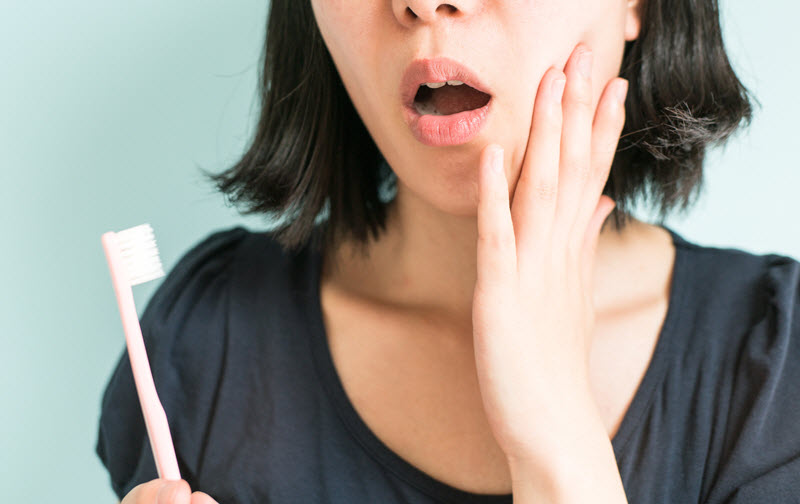Roughly 80% of all adults in the United States have some form of periodontal disease, also known as gum disease. Many who have it don’t know it, as early stage symptoms can be extremely subtle. However, it is important to keep an eye out, as treating gum disease is manageable through regular routine cleanings and dental checkups. Catching gum disease in the early stages is critical as it can increasingly become more difficult as it progresses.
What Is Gum Disease?
Gum disease starts with a plaque, a sticky mix of food debris and bacteria that coats the teeth. It can harden into tartar, or calculus, which is quite difficult to remove. Tartar irritates the gums, creating tiny openings that bacteria can enter. When bacteria get into the gums, the chronic infection known as gum disease is the result.
The earliest stage of gum disease is gingivitis, or inflammation of the gums. If left untreated, the bacteria will start to attack the soft tissues and bones that support the teeth, leading to periodontitis. This stage carries a high risk for severe tooth decay and even tooth loss, and the infection can wreak havoc on your overall health.
If you notice any of the warning signs below, tell your dentist as soon as possible
Bad Breath
Halitosis, or bad breath, can be caused by many factors, but most cases can be alleviated with careful oral hygiene. If you notice bad breath and an odd taste in your mouth that do not go away with brushing and flossing, you may have early stage gum disease.
Changes in the Gums
Healthy gums are smooth and even across the teeth, and are pink or coral in color. They feel firm to the touch, and there are no sore spots. If your gums are tender, red, or swollen, or if you experience pain with brushing, you may have gingivitis.
As gum disease worsens, the gums start to recede from the teeth. Gums that do not look even or teeth that appear longer than they once did may indicate the gingivitis is worsening to periodontitis.
Bleeding or Pus
Since gum disease causes inflammation and irritation, bleeding gums are a natural result. If you experience bleeding during brushing and flossing, or when eating crunchy foods, call your dentist.
As gum disease progresses, small pockets of pus can form between the teeth and the gums. They feel swollen to the touch, and may be hard or soft. If you accidentally pop one while brushing or eating, you will notice a very bad taste in your mouth. If these remain untreated, they can develop into large, highly swollen, extremely painful abscesses.
Changes in Your Bite
The way your teeth come together is known as your bite. In later stages of gum disease, bacteria invade the bones and support structures of the teeth. This can cause your bite to change. If you have a partial denture that no longer seats properly in your mouth, or if your teeth no longer fit together evenly, tell your dentist immediately.
Lose or Shifting Teeth
In late-stage gum disease, the teeth can become loose and start to shift within the mouth. This is a serious symptom that indicates imminent tooth loss. To save your teeth, make an appointment with your dentist right away.
Ready to Make Your Dental Appointment?
If you’re ready to get started with a progressive yet conservative approach to your dental health, contact Creekview Dental today at 651-738-8204 to schedule an appointment.

